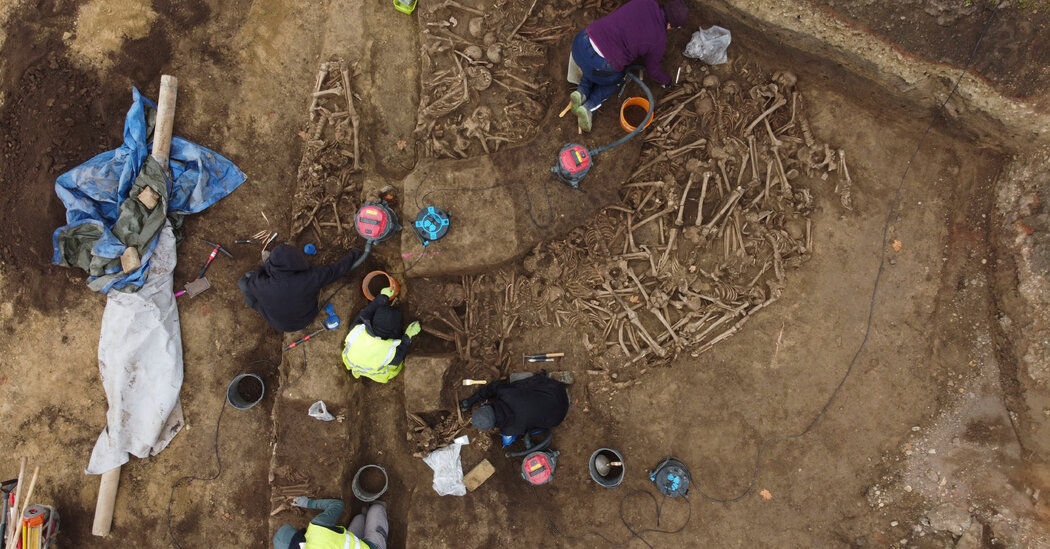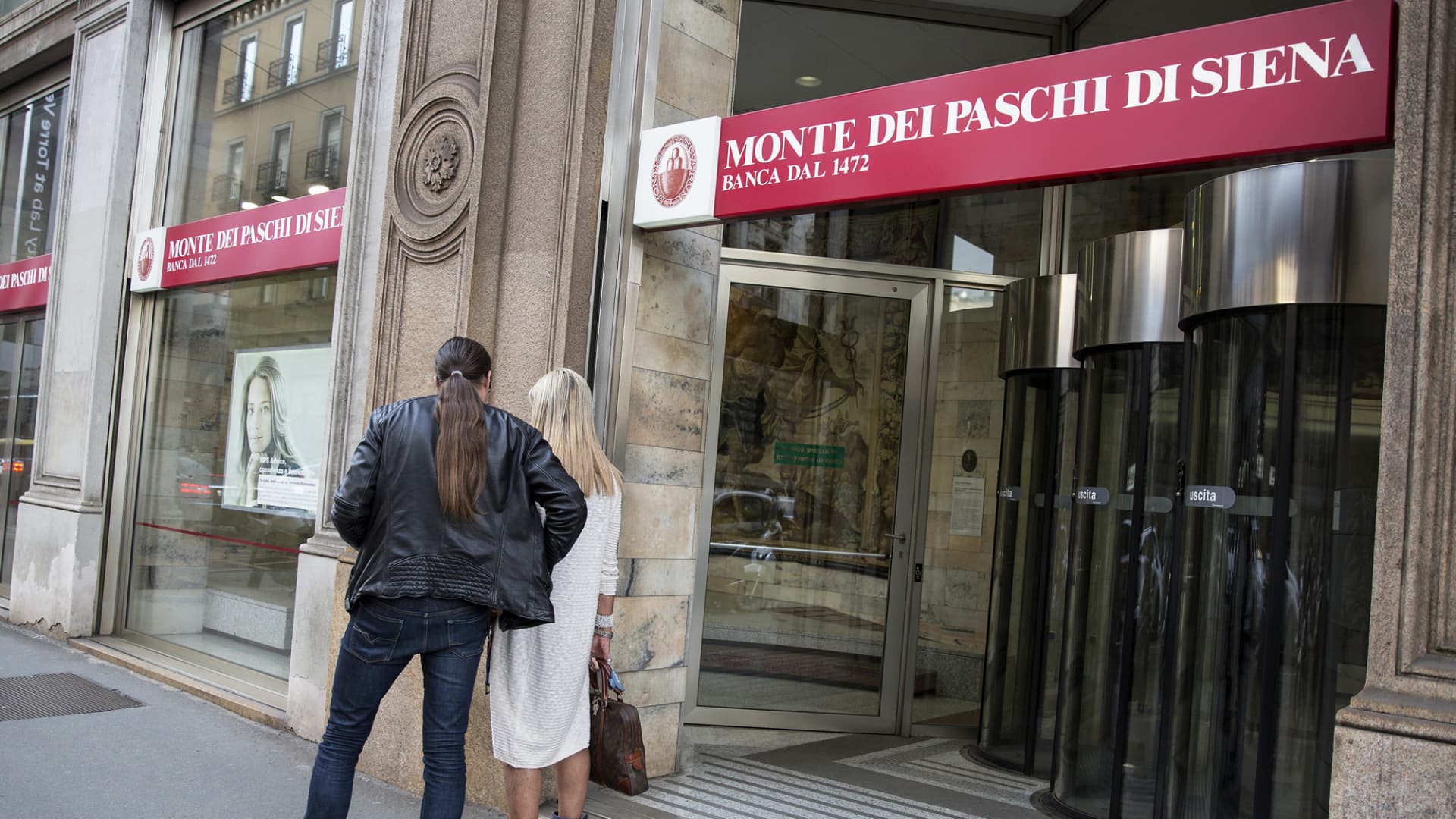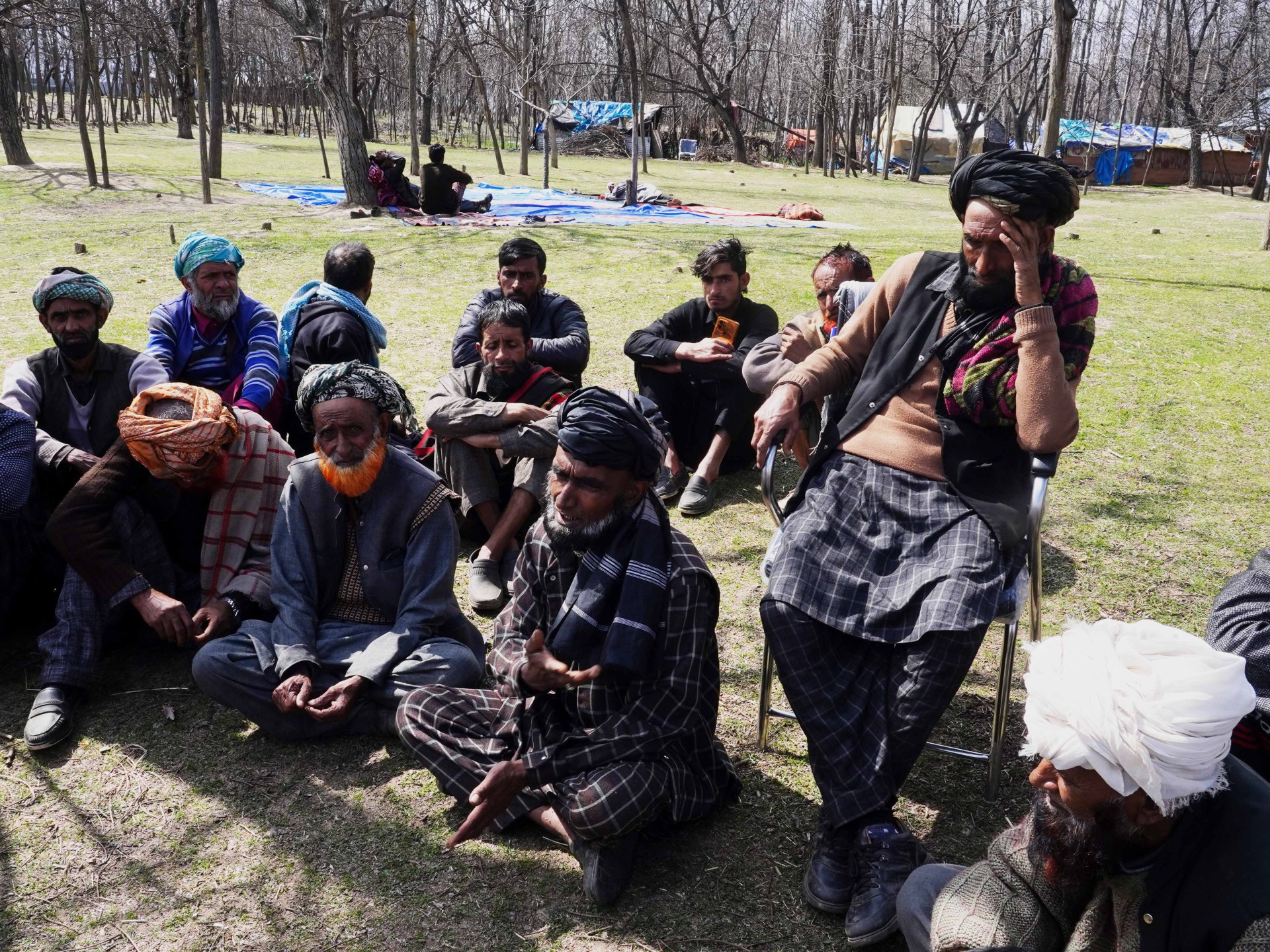Under a football field in a Danube district of Vienna, archeologists have found a massive pit dating to the time when the Roman Empire fought against the Germanic tribes almost 2,000 years ago, they announced experts this week.
The tomb was discovered in October by a construction company that reformed for the Simmering District field in Vienna, said a team of archeologists and historians of the Vienna Museum when announcing their findings. The extraordinary discovery was related to what they called a « catastrophic » military event, possibly one where Roman troops were badly defeated and fled the place quickly.
The radiocarbon of the appointments traced the bones to 80 to 234 AD, a period in which more than a dozen Roman emperors governed, including Domician and Trajan, who faced former Germanic Germans in the region. An analysis of other items found in the tomb, including an iron dagger, launch points, scale armor and a cheek helmet, helped to confirm the period of time.
Near the foot of a skeleton, archeologists also discovered nails of shoes that came from distinctive Roman military shoes called Caligae.
The discovery of these skeletal remains is extremely rare, according to experts, partly because the ancient Romans almost exclusively practiced cremation until the third century AD.
« For all average Europe of the first century, we have no human remains without burning, » said Michaela Binder, the main anthropologist of the project. « So, apart from the military aspect, it is a unique absolute opportunity to study the life stories of the people in the first century AD. »
He added: « We have the unique opportunity to study the life of normal Roman soldiers. »
Martin Mosser, an archeologist at the Department of Urban Archeology in Vienna, who worked on the project, said that because the Romans were very careful with burial and ritualized burning of bodies, the remains began to tell a story of what happened to men buried there.
« The outraged nature of the burial place along with the mortal wounds found in each individual suggests a catastrophic military confrontation, followed by a hasty withdrawal, » he said.
There are historical stories of the battles between the Germanic and the Romans on the Roman Empire border at the end of the first century, and the team called the tomb the first physical evidence of such a fight in the current Vienna area. The remains could be the beginning of the history of the metropolis, the team said, theorizing that a Roman defeat could have caused the expansion of a small military base a few kilometers away.
« It suggests a specific reason for the accumulation of Vindobona on a large -scale legionary fortress, which would take us to the founding moment of Vienna, » Mosser said, in reference to the military base.
The evidence surprised the team. Mosser said that before this evidence appeared, no Roman test had been found in this area of the city. « We couldn’t have expected a Roman battlefield in the Vienna area, » he said.
The remains of the tomb belonged to at least 129 people, archeologists found, but the total number could exceed 150, as some intermediate bones were found.
All the deaths examined so far were men, mostly between the ages of 20 and 30, and many had suffered frightening injuries, particularly in their skulls, torsos and pelvis.
Experts said that the wounds seemed to be arms such as spears, daggers, swords and iron screws of rank weapons, such as crossbows, suggesting that the dead were not executed, but had died in the battle.
The bodies seemed to have been buried quickly, with many encounters lying in the stomachs or on the sides with the intertwined limbs.
According to David Potter, a Greek and Roman history professor at Michigan University, who did not participate in the research.
« I think we have another time that reflects a Roman defeat and a burial of troops after the fact, » he said, drawing parallels on how the bodies of Roman soldiers were manipulated after their forces suffered a brutal defeat From the hands of the Germanic warriors to the Battle of the Forest of Teutoburg on 9 AD.
« It makes sense because of the nature of the battle for the injuries that have suffered these poor, » he added, adding: « The other side had many big clubs. »
The Vienna team said that its experts only began their research and that DNA analysis could provide more information on the origins and living conditions of people buried in the grave. The Museum’s report also raised plans to further examine objects in the grave.
On a personal level, Mr. Mosser said the case made an agreement. « With so many young people buried so irreverely, he inevitably thinks of the horrible wars of the latest and most recent past, » he added, and added, « the unfortunate conclusion: humans have not become wiser. »















Leave a Reply